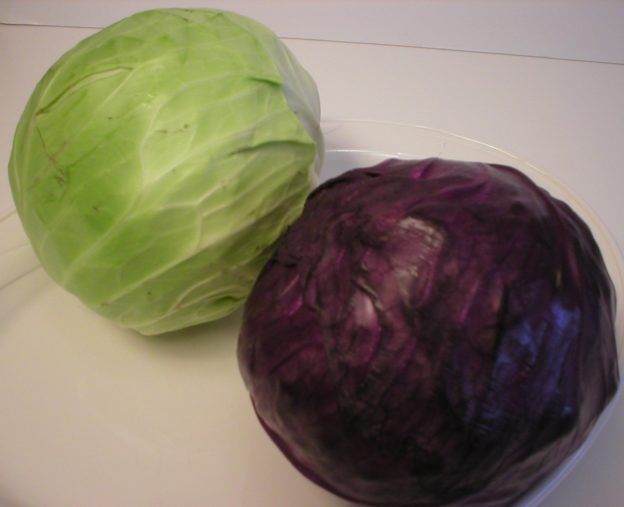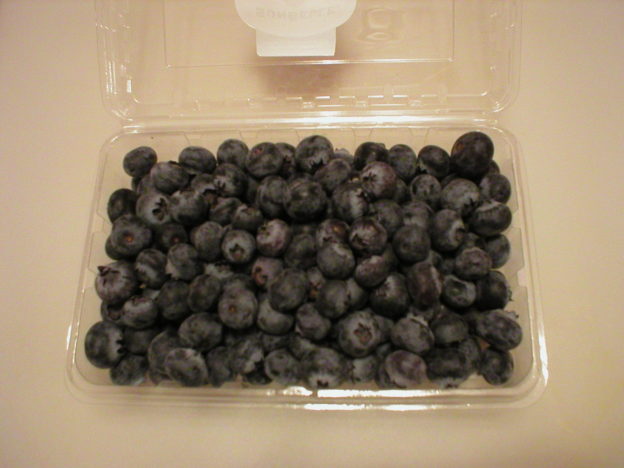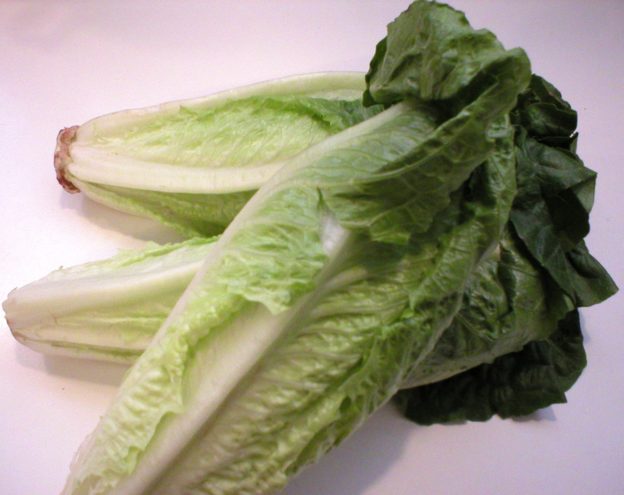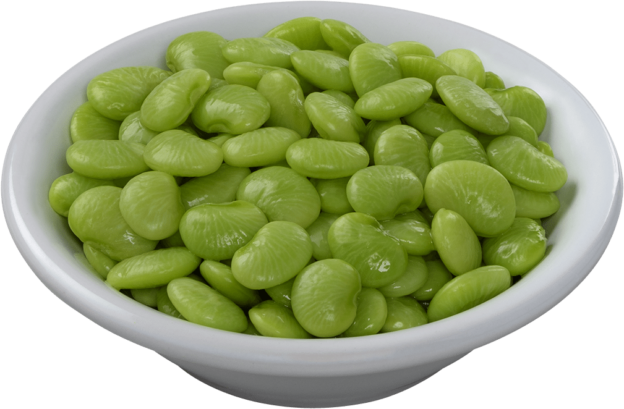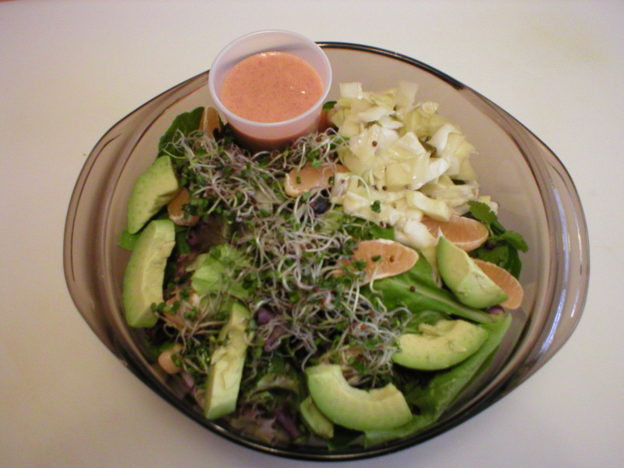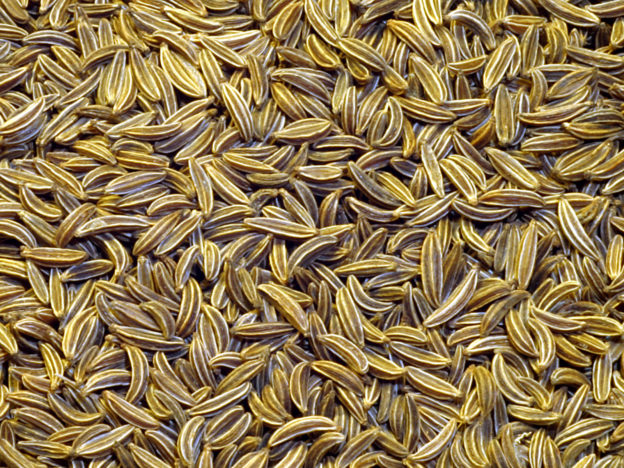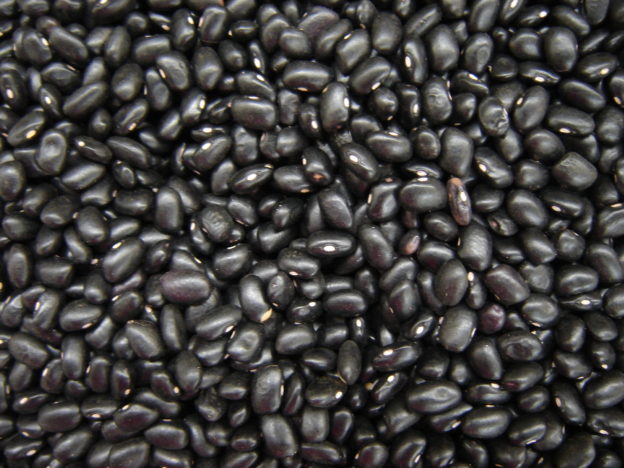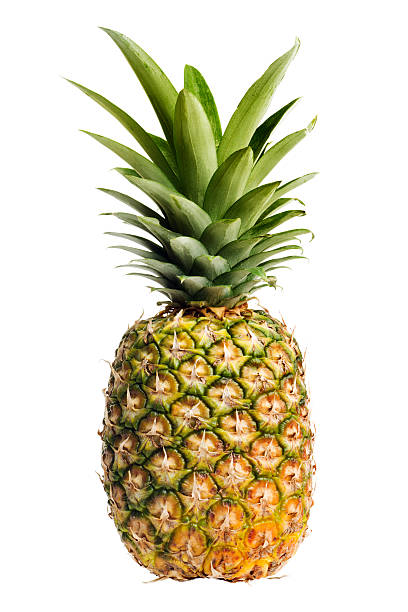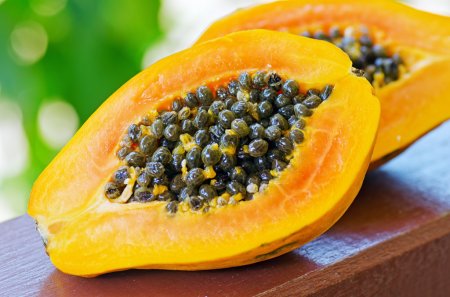We’ve all had times when money is tight. It’s never fun, but in the vast majority of cases, things WILL get better. It’s usually a matter of “hanging in there” until it does. In the meantime, here is a list of inexpensive foods and tips for healthy eating that can help you make it through the tough times.
Vegetables…
Fresh Carrots
Fresh carrots are a great buy year-round. A one-pound bag is under a dollar in most grocery stores and can go a long way in servings. There is little waste, especially if they are not peeled. Simply wash them very well and cut off the ends and any area that doesn’t look good. They can be eaten raw in salads or as a snack, added to soups, stews, and casseroles, served as a side dish, and included in main dishes. A pound of carrots yields about 3-1/2 cups when sliced. Assuming a serving is about one cup, and the cost of one pound of carrots is $0.75, that brings the cost per serving to about $0.21. The cost of a half-cup serving of cooked carrots, at $0.75 per pound would be about $0.11 each.
Fresh Cabbage
A head of fresh cabbage packs a lot of food within its head. Whether it’s chopped, shredded, fermented, stir-fried, boiled, roasted, sautéed, or used as a wrap, we can get a lot of mileage out of one head of cabbage. One pound of shredded cabbage yields about 4-1/2 cups. Most cabbages weigh well over one pound, so if you opt for a heavy cabbage, you’ll get a lot of servings out of it. Assuming one serving is one cup of shredded cabbage, and assuming that cabbage cost $0.68 per pound, that brings the cost per serving to a mere $0.15.
White Potatoes
A five-pound bag of white potatoes can often be found for around $2.50, or even less. One pound of potatoes yields about 3-1/2 cups chopped or 2-3 cups mashed. Assuming a serving size is 2/3 cup, at $2.50 for five pounds, that brings the cost per serving of chopped potatoes to around $0.09, and mashed potatoes to around $0.13.
Sweet Potatoes
Fresh. Fresh sweet potatoes are usually around $1.00 per pound (sometimes less). As with white potatoes, one pound yields about 3-1/2 cups chopped. So comparisons are equal, assuming a serving size is 2/3 cup (which is what is listed as a serving size on the canned sweet potatoes), at $1.00 per pound, that brings the cost per serving to about $0.19.
Canned. A 40-ounce can of yams sells for about $2.25. The Nutrition Facts panel lists a serving size as being 2/3 cup with 7 servings being in the can (including the liquid). At that rate of usage, the cost per serving is about $0.32. Note that canned yams are usually packed with added sweeteners. If you are trying to avoid such additives, fresh sweet potatoes would be your best option.
Lettuce
Whole heads of lettuce are usually your cheapest option when buying lettuce. They are often the freshest to choose from, offer the most lettuce for your money, and have been shown to have the lowest bacterial count among the options, even when compared with triple-washed lettuce and lettuce blends in bags and plastic boxes. A whole head of non-organic lettuce averages about $1.50, with organic options up to twice that amount.
One head of lettuce yields from 4 to 6 cups when torn, depending upon the variety. For the sake of comparison, we’ll assume one head of lettuce yields 5 cups of torn leaves. Assuming 1 cup is a serving, that brings one serving of torn lettuce leaves to about $0.30. When comparing head lettuce to spring mix baby leaves in an 11-ounce tub that sells for $4.84, a one cup serving comes to $0.69 each.
Cauliflower (Fresh Whole Head vs Frozen Florets)
Fresh. The advantage to buying a whole head of cauliflower is that they are usually priced individually rather than by the pound. Choose a fresh cauliflower that feels very heavy for its size, with no browning on the surface, and you’ll get a lot of bang for your buck. A medium head of cauliflower yields about 6 servings and averages about $2.75 in cost. That brings the cost per serving to $0.46.
Frozen Cauliflower Florets. Frozen cauliflower florets may be found in some stores. When writing this, I found a 12-ounce bag of frozen cauliflower florets for $1.79. The Nutrition Facts panel suggested a serving size as being ¾ of a cup, with 3 servings in the bag. That brings the cost to $0.60 per serving.
Fresh Kale or Other Greens by the Bunch
A one-pound bag of fresh (not organic) kale costs about $2.94. The bag lists about 6 servings per bag. That comes to $0.49 per serving.
Bunches of fresh greens, such as kale, turnip greens, and collard greens often sell for about $1.48 each. Bunch sizes vary, so it’s impossible to precisely state the cost per serving. However, assuming one bunch offers 4 servings, at $1.48, it comes to $0.37 per serving. With that, the individual bunches of greens are cheaper per serving than the prepackaged one-pound bags.
Canned Tomatoes and Tomato Paste
Canned tomatoes and tomato paste are available in just about any grocery store year-round. They are inexpensive and flavorful additions to many foods. They can be added to soups, stews, casseroles, sauces, dressings, and even beverages. Unless you grow your own tomatoes, the canned varieties are usually cheaper than buying fresh tomatoes for the same applications. The price of canned tomatoes (14.5-ounces) usually starts around $1.00 a can, with name brands being a little higher. Generic (6-ounce) cans of tomato paste may start as low as $0.42 a can with name brands being higher than that. Whichever you choose, they are a great buy and can add a lot of flavor to foods.
Frozen Vegetables
Frozen vegetables are a very easy and convenient food to have available. They can be used as side dishes and included into a wide array of other foods like salads, soups, stews, casseroles, etc. Many people are now buying frozen vegetables in steamable packaging, which makes cooking them in the microwave very easy and convenient. However, when comparing the cost per serving, the steamable packaging often adds extra expense to the vegetables. Notice that I said “often.” That is because this is not always the case. In this case, it’s helpful to compare cost per serving to determine which is cheaper…frozen vegetables in steamable packaging or those in regular packaging that cannot be placed in the microwave. Usually, those packaged in regular packaging are cheaper per serving, but not always, especially when comparing like items in a generic brand. That being said, however you buy them, frozen vegetables can go a long way in helping to stretch the food budget, depending upon how they are used.
Fresh Celery (Whole Bunch, Not Celery Hearts)
When shopping for celery, choosing the entire bunch will be cheaper than selecting a package of celery hearts. The whole bunch includes the leaves and root end. Many people cut off and discard the leaves, however, they are completely edible and add celery flavor to any dish they’re added to. If you have aversion to eating the celery leaves, place them in the freezer and save them for soup or stock. The entire bunch of celery often can be purchased for about $1.50, whereas the celery hearts will cost more than that, sometimes up to $3.00 for organic varieties.
Fresh Onions
One 3-pound bag of yellow onions can be found at many grocery stores for around $1.50 a bag. Onions are essential for flavoring some foods, and a 3-pound bag of onions can go a long way when being added to freshly prepared foods. They can be used raw in salads and on sandwiches, added to a huge array of cooked foods, and even caramelized and eaten as a side dish with a uniquely sweet flavor. For anyone who prepares food “from scratch” onions are a very inexpensive essential ingredient.
Fresh Garlic
Fresh garlic may appear to be expensive, since it is usually priced by the pound. However, a bulb of garlic is small and lightweight, bringing the cost per bulb down more than you would think at first glance. When priced by the “each,” garlic bulbs can be found for $0.50 each. Like onions, garlic is an essential ingredient in many home-cooked foods and there simply is no substitution. Considering that many recipes call for only one or two garlic cloves at a time, you can get some flavor bang for your buck when buying garlic.
Fruit…
Bananas
Bananas are one of the cheapest fruits available, often selling for around $0.69 a pound (and sometimes less). One medium banana will usually cost around $0.25 each, of course depending upon its size. They are filling and nutritious, so bananas are excellent options when on a tight budget. Even better is the fact that you can buy whatever number of bananas you want, down to only one, if needed.
Fresh Pineapple
Fresh pineapple is a fruit you may not think of when on a tight budget. However, they can often be found for around $2.25 each. Considering how much fruit you get from one whole pineapple, it’s a good buy, especially when comparing it to the cost of canned pineapple. One fresh pineapple contains about 5 cups of pineapple when cut into cubes. One-half cup is considered to be a serving, so one whole pineapple has about 10 servings of fruit. At $2.25 each, one serving of fresh pineapple comes to about $0.23. One 20-ounce can of pineapple chunks (packed in juice) sells for about $1.28. The can holds about 4-1/2 (1/2 cup) servings, bring the cost per serving to $0.28, so fresh pineapple is a better buy.
Watermelon (when in season)
One large watermelon in season offers a lot of servings and is a great bargain when considering the number of servings you get per fruit. When in season, they are usually sold by weight and are very inexpensive since they are usually plentiful. When off-season, many stores still carry them, but they are much more costly and would not be the cheapest option during the winter months and early Spring. Choose a melon that is heavy for its size, sounds hollow when tapped, and is yellowish on the side where it rested on the ground. There may be pre-cut melons available, but they will cost more per pound than the whole melons.
Frozen Mangoes
When thinking about inexpensive foods, mangoes usually don’t come to mind. However, when comparing the cost of a fresh mango to a large bag of frozen mango chunks, the frozen bag wins the prize. I found a 48-ounce bag of generic brand frozen mango chunks for $6.47. That may sound a bit pricey, but when considering the contents vs buying that same amount in fresh mangos, I considered the frozen option to be a good buy. The large bag had 10 each 1-cup servings, which is equivalent to about 10 average size mangoes. With the price of the large bag, that comes to about $0.65 per mango or per 1-cup serving. Where I live, fresh mangos usually sell for about $1.00 each. Sometimes they sell for less, but it’s not often that I can find them for as low as $0.65 each. So, with all things considered, if you enjoy mangoes, the frozen option may be a good choice for you. Also, the advantage of the frozen option is that you won’t be in a rush to eat them before they go bad. You can simply take what you need from the bag without issue.
Grain Products…
Oats
Oats have become increasingly more popular these days. They can be used as a traditional breakfast porridge, eaten soaked with milk of choice, made into oat milk, added to burgers and other foods, and even eaten in savory dishes at meals other than breakfast. When comparing prices, I focused on old fashioned rolled oats, either regular or quick cooking. Prices varied a lot, with $0.11 to $0.13 being the lowest cost per ½-cup serving (when measured dry) of rolled oats.
When comparing the price of steel cut oats, the cost per serving was about $0.18.
Rice
White Rice Long-Grain. There are many types of rice on the market, and they each have their own price points. For the most part, whichever type of rice you buy, it will have a relatively low cost per serving. When comparing the ever-popular long grain white rice, the cost per serving ranged from $0.04 to $0.08. This is an EXTREMELY low-cost food when considering cost per serving and can be a staple for many meals when on a tight budget.
Brown Rice, Long-Grain. When comparing the price per serving of brown rice, it was very comparable to the long-grain white rice, averaging about $0.06 per serving.
Pasta
Pasta is a standard low-cost food, often being sold for around $1.00 to $1.30 a pound (for traditional wheat-based pasta). It can be used in salads, side dishes, main dishes, soups, casseroles, and even as a crust for pizza. Food processors often list 2 ounces of dry pasta as a serving. From my personal experience, I find that to be about half what I would normally eat when having pasta as a main course. So, assuming pasta is the main course, we’ll count 4 ounces (dry) as one serving. At $1.30 a pound, that brings the cost of one serving to $0.33. If serving pasta as a side dish, using 2 ounces (dry) per serving, the cost would be about $0.16.
Bread
Bread can serve as a foundational element of many meals, from sandwiches to French toast to being used as a pizza base. Assuming a loaf of traditional bread costs about $3.00 and has 22 slices, the cost per slice is $0.14. The cost of specialty bread such as gluten-free bread is usually twice that of traditional wheat bread, and often has fewer slices per loaf. Assuming the cost of such a loaf is $6.00 with only 12 slices, the cost per slice is much higher at $0.50. If you’re on a tight budget and must eat gluten-free, then such bread may be too costly when money is tight. Opting for something else may be preferred.
Protein Foods…
Peanut (and Nut) Butter
Peanut butter can be used as a sandwich and snack filling, and even as a thickener and flavoring agent in sauces, dressings, and other foods. All nut/peanut butters are considered to be good sources of protein and may help meet nutritional needs, especially when dollars are short. Peanut butter is usually cheaper than nut butters, and is available in most grocery stores. Prices per 2-tablespoon serving vary widely among different types of peanut butters. One name brand all-natural peanut butter sold for $4.86 for a 26-ounce jar. The price per serving came to $0.21. Another name brand option of traditional peanut butter sold for $5.44 for a 40-ounce jar, bringing the cost per serving to $.16. A generic brand of traditional peanut butter sold for $4.68 for a 64-ounce jar, bringing the cost per serving to $0.08. DO read the labels because all peanut butters are not created alike. Ingredients DO vary, so be sure you’re getting what you need before making your purchase.
Nut butters vary in price depending upon the type of nut or seed used in the butter. When comparing a name brand of almond butter with a generic brand, of course the generic brand was cheaper per serving. The name brand sold for $6.97 for a 12-ounce jar, with 11 servings, bringing the cost per serving to $0.64. That may be too high when money is tight. The generic brand of almond butter was a little cheaper, selling for $4.98 for 12 ounces, bringing the cost per serving to $0.45. That is still not an extremely cheap food, but it is less costly than meat. So, it may or may not work for you when money is tight.
Dried Beans, Lentils, and Chick Peas
Dried legumes are well known for being inexpensive sources of protein. They can be cooked and used as a main dish or side dish, and added to soups, stews, casseroles, burger, tacos, burritos, and even salads. The prices will vary among the different varieties, but any way you go, you’ll get a lot of food for your dollar. Yes, they must be soaked and cooked, but there is not a lot of hands-on time spent in the process, and it’s actually very easy. Extras can be stored in the refrigerator or in the freezer for a longer period of time. Dried beans, lentils and peas should be a first-choice for a protein source when on a tight budget.
Canned Baked Beans
Canned baked beans are a very inexpensive choice when planning meals on a tight budget. Simply open the can and they are ready to use. They can be used as-is or more flavorings added, if desired, although that is not mandatory. One name brand of baked beans was sold for $1.50 for a 28-ounce can. The can held 6 each ½-cup servings, bringing the cost per serving to $0.25. Putting together a main dish with canned baked beans can’t be any easier when on a tight budget!
Canned Tuna
Canned tuna is another very quick and easy protein option when planning meals on a tight budget. When comparing prices, a 12-ounce can of name brand tuna sold for $2.08. There were three servings listed on the Nutrition Facts panel, bringing the cost per serving to $0.69. Not bad for a complete protein, and it’s cheaper than meat.
Eggs
A dozen eggs can be found in just about any grocery store. They often sell for around $1.50 a dozen, coming to about $0.13 each. This is REALLY inexpensive considering they can be used as a main course, boiled and added to salads and other dishes, used as binding agents in breads, pancakes, and other cooked or baked foods, and even eaten as snacks. When on a tight budget, having a dozen eggs in the refrigerator can help to stretch your dollars in a lot of ways!
Dairy…
Milk
Buying milk by the gallon is cheaper than buying it in smaller containers. If you’re a milk drinker, this may be your preferred option. Nonfat dry milk is usually cheaper than fluid milk, but the flavor is certainly not the same. If you don’t use a lot of milk, but want to have some available, consider buying a small box of dry milk and mix up only what you need at the moment.
Non-Dairy Milk
Non-dairy milks are without a doubt more expensive than cow’s milk. However, there are many reasons why some people avoid cow’s milk and opt for plant-based milks. If you prefer plant-based milks yet find them to be too expensive at the moment, consider making your own oat milk. It’s not hard to make, and you can easily make as much or as little as you want at a time. This saves money and allows you to use what you probably already have in your pantry.
Tips for Healthy Eating When Money is Short…
Plan Home-Cooked Meals and Make a Grocery List
Take time to plan your meals in advance, if at all possible. When money is tight, it’s far cheaper to prepare meals yourself than ordering take-out or going to your favorite restaurant. Take a look in the refrigerator, pantry and freezer and incorporate what you can that you already have into the next week’s meals. This will not only save money, but will help to rotate your food so it’s used before it gets stale or goes bad. Make a grocery list of what you’ll need (that you don’t already have) to make those meals. Try to avoid adding too many extra things that won’t be needed for the next week.
Stick with Your Grocery List When Shopping
When you’re at the store do your best to stick with your grocery list. When choosing items, look for the cheapest option and choose that, if it will work for you. This might be the least cost per ounce, pound, or by the “each.” Sometimes the label on the store shelf will list the price per unit. This can make shopping easier than trying to do the math yourself. If you see something you forgot to add to the list that you know you don’t have at home and will need for the meals you’ve planned, then get it. If it’s not needed for the next week, let it wait and save those few dollars for the moment.
Save Time by Fixing Large Meals and Using the Leftovers
This saves time over the course of the week. Leftovers can be used for lunches the next day, or used as small portions along with a salad for another main meal. They can also be frozen in individual serving size containers for use later when time and/or money is short.
Avoid Shopping When You’re Hungry
Shopping when you’re hungry is a BIG way to add to the grocery bill. It’s all-too-easy to pick up extra items when you have an empty stomach. Before you know it, you’ve gone way over budget. So, try to arrange your shopping trips after having eaten a substantial meal. It’ll do a budget good!
Buy Less Processed Foods (Strive for None)
Less processed, whole foods are healthier to eat than processed. Sometimes, they are cheaper. For instance, a brick of cheese is usually less costly than shredded packaged cheese. A whole cauliflower is cheaper than packaged cut cauliflower. A whole melon will be cheaper per pound than a cut melon. Nevertheless, many people swear that processed foods are cheaper when groceries are tallied. In some cases, that may be true. However, when considering the toll processed foods have on your health, eating whole, unprocessed foods (and preparing meals yourself from plain ingredients) will help to regain and preserve your health far better than their processed counterparts. There’s an adage that applies here… “You either pay for it at the grocery store, or pay later at the doctor’s office.” Truer words could never be spoken when it comes to food. If you want to keep or regain your health, remember that motto and opt for less processed foods any time you can. Your body will thank you for it. AND, so will your pocketbook in the long run!
Buy Generic Brands When You Can
Buy generic brands if you can. Read the labels to be sure they will meet your needs. Sometimes the ingredients in generic brands will differ than those in the name brands. This may or may not be right for you. If possible, use the generic brands since they will almost always be cheaper.
Avoid Junk Food
If a food won’t promote good health, then it’s not worth spending your precious dollars on. If you yearn for a dessert after a meal, choose fresh fruit instead of something laden with added sugars, fat and empty calories. Those foods are unhealthy to eat and are expensive too. Enjoy a piece of fresh fruit and savor it as you eat it. Slow down, enjoy the moment, taste the natural sweetness, chew slowly, and enjoy nature’s bounty as it is intended to be enjoyed.
Take Advantage of Sales
If items you use on a regular basis are on sale, buy a few extra to save dollars over time. If the items are perishable, make sure you can use them before they go bad. Otherwise, you’re simply tossing your hard-earned dollars in the trash.
Eat More Plant Proteins
Plant proteins such as beans, peas, lentils, nuts and seeds are cheaper per serving than most animal proteins. Such foods also provide an array of vitamins and minerals, along with fiber that is not found in animal foods. Even if you enjoy meat, fish and poultry, making one or two days a week “meat-free” will boost your health in many ways as well as giving your budget some relief.
Shop in Season
Fresh foods in season will often be cheaper than those that had to be shipped half way around the world to reach you during off-season months. Foods in season will also be higher in nutrient value than older ones that had to be shipped long distances to reach your grocery store. So, shopping in season and buying locally when possible not only gives your wallet a break, but also boosts your nutritional intake too.
Don’t Forget Frozen Fruits and Vegetables
Fruits and vegetables are usually frozen soon after being harvested. So in some ways, they may be fresher than their counterparts in the fresh produce isle. There may be some nutrient loss during the freezing process, but there is also nutrient loss over time in fresh fruits and vegetables. The only way to get around that is to pick your own from your personal garden or a local farm. Shopping at a local farm market is the next best thing, but in many areas they are not available year-round. Your next best option would be to choose frozen fruits and vegetables. Frozen fruits and vegetables can be used in meals, added to smoothies, used as a topping for morning porridge, thawed and used in salads and desserts. They are very convenient since they will be there when you’re ready for them, with no worries about perishability in the refrigerator.
Buy in Bulk When You Can
If you have storage room, buying in bulk can save money over time since many foods are cheaper by the “unit” when purchased in bulk. Grains are an excellent example. Rice, millet, barley, and oats can often be found in bulk, whether online or in some grocery stores.
Start a Garden, If Possible
Growing your own food is not only rewarding, but cheaper than buying it in grocery stores. Seeds are inexpensive, considering the yield you get from a mere seed or two. Extra seeds can be kept in the freezer to prolong their life, so they can be good for more than one growing season. Also, freshly grown produce often tastes better than store-bought, and its nutrient content should be higher than that of store-bought counterparts since they are not as old. So, get venturesome and start a garden if you can. Start small as you learn, then plant larger gardens as time, space, and knowledge allows.
Pack Your Lunch
Taking your own lunch ensures you have complete control over what’s in your meals. You’ll very likely be eating more nutritious meals than you would have if buying your lunch out, AND you’ll be saving money too. If you’re used to buying lunch out on a regular basis, taking your own lunch may seem like a daunting task. However, it doesn’t have to be. Make extra food in the evenings, pack it up in a to-go container, and place it in the refrigerator for the night. In the morning, simply take your lunch container to work with you and store it in the refrigerator there, if there is one. If not, put it in an insulated bag with ice packs and it should keep well for you until lunchtime. Most offices have a microwave available, so if it needs to be heated, use the microwave. Packing lunch for the next day while preparing supper (OR packing some leftovers when you’re finished eating supper) makes taking your lunch extremely easy and doesn’t take any extra time in the morning. Simple planning ahead makes this very do-able.
Resources
https://www.healthline.com/nutrition/29-cheap-healthy-foods#section2
https://tuppennysfireplace.com/best-frugal-foods-buy-broke/
https://familiesforfinancialfreedom.com/cheapest-groceries-list/
https://greatist.com/health/44-healthy-foods-under-1#Drinks
https://www.mymoneyblog.com/cheapest-vegetables.html
https://www.thekitchn.com/best-cheap-fruits-vegetables-258057
https://www.backyardboss.net/cheapest-fruits-and-vegetables/
https://www.almanac.com/content/measuring-vegetables-recipes-pounds-cups#
https://www.healthline.com/nutrition/19-ways-to-eat-healthy-on-a-budget#section5
https://www.wisechoicemarket.com/blog/-the-true-cost-of-processed-foods/
About Judi
Julia W. Klee (Judi) began her journey enjoying “all things food” in elementary school when she started preparing meals for her family. That love of food blossomed into a quest to learn more and more about health and wellness as related to nutrition. She went on to earn a BS Degree in Food and Nutrition, then an MS Degree in Nutrition. She has taught nutrition and related courses at the college level to pre-nursing and exercise science students. Her hunger to learn didn’t stop upon graduation from college. She continues to research on a regular basis about nutrition as it relates to health. Her hope is to help as many people as possible to enjoy foods that promote health and wellness.

